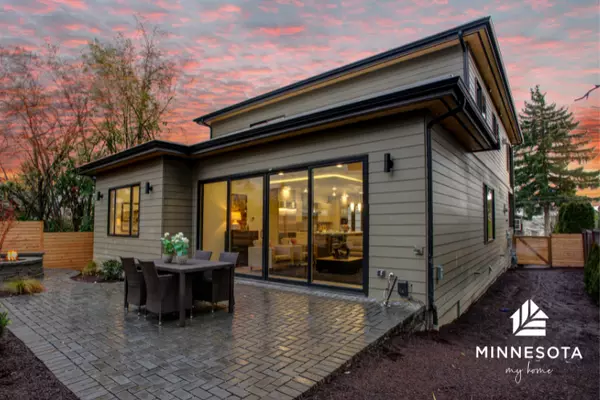Negotiate After an Inspection
Negotiations often take place after a home inspection, and the home inspector frequently gets put in the middle of it. The role of a home inspector is never to decide what should or shouldn’t be negotiated as part of a home purchase, assuming anything gets negotiated. That’s a job for the real estate agent. This blog is about negotiations after the inspection.

Part 1: What is a Home Inspection
Before a home buyer even has a home inspection, it’s important to know what the home inspection is all about. A home buyer hires a home inspector to learn about the home, and the inspection report is the document that the buyer is left with, detailing the results of the inspection. The inspection report is not a repair list for the seller, nor is it a stick to beat the seller with on price. Most home inspection reports will have a large list of recommendations, typically for improvements, repairs, and safety upgrades. This is normal for a used house.
Issues that come up during a home inspection may be negotiable, but there are no hard and fast rules about repairs that sellers need to complete as a result of a home inspection. In fact, here in Minnesota where home inspections are not regulated, there are no rules at all. When a home inspector finds defects during a home inspection, there are four choices for a buyer:
Renegotiate the price
With this option, the buyer can hire their own professionals to do the work, and they can oversee the whole project after they own the house. This is a common approach, but it’ s not always a practical approach because it doesn’t leave the new home buyers with any cash to pay for repairs.
Cancel the purchase agreement
This typically happens when the buyer decides there are too many issues with the house, or the issues are greater than what the buyer wants to deal with or when buyers and sellers can’t come to an agreement.
Ask the seller to perform repairs
When asking a seller to perform repairs, it’s important to be specific. Say exactly what should be done, by whom, permits pulled, inspected, and approved, when the work should be completed by, and documentation provided to the buyer by a certain date.
Do nothing
This is often the best option for buyers. When buying a used home, buyers shouldn’t expect things to be perfect, because they never are. Walls get damaged, showers leak, appliances fail without notice. This doesn’t mean buyers shouldn’t address defects after they’ve bought the house, but it’s unrealistic to expect sellers of used houses to fix every little defect. Asking sellers to address a long list of minor repairs will make the seller feel defensive about their home and make the buyers look petty.
Part 2: Stuff that shouldn’t be negotiated
We at Structure Tech and Minnesota My Home are not real estate agents nor attorneys, so this is not real estate advice or legal advice. These are our opinions. We don’t share these opinions on negotiations during home inspections, nor do we share them in our inspection reports. This is completely outside the realm of a home inspection, and honestly, it’s outside the realm of our area of expertise. Nevertheless, we certainly have opinions about this stuff. The following is a list of things that we generally feel should not be negotiation items as a result of a home inspection.
Known conditions = no negotiations
No price or repair negotiations should take place regarding conditions that were known prior to the home inspection. If a condition is readily visible or apparent, it’s not something that was “discovered” during the home inspection. A few examples of known conditions include:
- Peeling paint
- Damaged interior walls
- Damaged floor coverings
- Deteriorated driveways or walkways
- Any conditions listed in the Seller ’s Property Disclosure Statement
If any of these are going to be negotiation items, they should be negotiated before the inspection.
Old = no negotiations
We frequently hear discussions of old components or components that are at or near the end of their service life expectancy. This shouldn’t be a negotiation item. Technically, the buyers can ask for anything, but to ask for replacement of a fully functioning used or old component in a fully functioning used or old house is a bit much. Here are a few things that need to be periodically replaced on homes:
- Windows
- Furnace
- Air Conditioner
- Water Heater
- Appliances
- Garage door opener
On the other hand, if a home seller advertises a “new” feature, but that information is not accurate, that would be a completely different story. Also, if a home buyer discovers numerous items at the end of their life and they know they won’t be able to afford replacements soon, they might decide that the home they’re buying isn’t the right one for them… unless perhaps the seller would like to help out. It’ s not unreasonable to renegotiate at this point, but a price negotiation typically won’t help a buyer, because this doesn’t give the buyer any more cash to deal with repairs or replacements.
Minor defects = no negotiations
Used houses aren’t perfect. Part of being a homeowner means spending time and money on the house. This is something that home buyers must accept and plan for. Here are some small, petty things that we feel home buyers shouldn’t ask sellers to address:
- Missing cover plates at outlets, switches, and junction boxes
- Missing caulk
- Dirty furnace filter
- Dirty AC condenser
- Damaged insect screens
Code changes / safety upgrades / energy upgrades = no negotiations
While a home inspection is not a code compliance inspection, home inspectors often recommend safety upgrades due to changes in building codes. It’ s bad form to ask a seller to make these types of upgrades. That’s not to say these safety and energy upgrades are not important, but we believe they make for somewhat petty negotiation items. A few of these conditions include:
- Lack of AFCI devices
- Lack of GFCI devices
- Lack of safety glazing in hazardous locations
- Anything related to stairway safety, including wide spacing on stairway balusters
- Protection of the municipal water supply against backflow
- Minimal attic insulation
Of course, there are always exceptions. If new work was performed at a home and advertised as such, it’s only fair to expect the work to be done properly.
In closing, if a home seller is already upset because they’re selling their house for less than they wanted, they won’t be happy to receive a list of small chores from a home buyer in the form of a purchase agreement amendment. This can be the straw that breaks the camel’s back, leading to the deal falling apart. We hate to see this happen because items that cost hundreds of dollars to fix should never hold up the sale of a property that costs hundreds of thousands of dollars. Our advice to home buyers is to not put yourself in that position. Treat the home purchase like a relationship; do you want to be right, or do you want to be happy?
Let the little stuff go.
Part 3: Reasonable Negotiation Items
For this section, we’re covering some common home inspection findings that are frequently negotiated. We’re not saying these items should be negotiated, but these are common items that get negotiated, and we don’t feel that
any of these things are unreasonable.
What all of these items have in common is that they’re usually expensive, not obvious, or take special knowledge to recognize.
Big Roof Problems
- Leaking roofs
- Defective shingles that could allow for leaks
- Improper roof installations that could allow for shingles to come loose
- Roof coverings at the end of their life
Why do we mention roof coverings at the end of their life as a reasonable negotiation item, but excluded old appliances in part 2? Because appliances can be replaced after they fail. Roof coverings should be replaced before they fail.
Big Electrical Items
- FPE Stab-Lok panels
- Overloaded electrical panels
- Aluminum branch circuit wiring
- Unsafe knob & tube wiring
- Pervasive electrical hazards (open spliced wiring, unprotected wires, improperly wired outlets, etc.)
- Immediate shock/electrocution hazards, such as exposed, live wires protruding from walls
- New, improper electrical wiring where the extent of the defects is unknown
Big Exterior Problems
- Masonry chimneys in need of more than minor repairs
- Windows in need of replacement
- Rotting or water intrusion at the walls
- Siding in need of major repair or replacement
- Unsafe decks
Big or Immediate Plumbing Items
- Galvanized water distribution pipes that do not supply adequate water flow
- A water supply pipe from the street to the house that may need replacement
- Galvanized steel drains in need of replacement
- Active leaks – water piping, gas piping, drains, vents, etc.
- Clogged drains
Big or Immediate HVAC Items
- Equipment that is not functional, such as the heating plant, air conditioner, or HRV
- Unsafe fuel-burning appliances, typically due to combustion or venting problems
– A cracked heat exchanger at the furnace
– A boiler that leaks exhaust gas
– A backdrafting water heater
Other Things that Freak People Out
- Wet basement issues
- Moisture or frost in the attic, and/or major ice dam issues. The fix for both of these is to address attic air leaks, insulation, and sometimes attic ventilation. While adding insulation is generally considered an upgrade, if insufficient insulation and attic air leaks are leading to water problems, we consider this to be a repair, not an upgrade.
- Foundation problems
- Major structural deficiencies
- Environmental items that are excluded from home inspection standards, such as:
– Buried fuel oil tanks
– High radon
– Loose/friable asbestos
There are many other possible items, but this list makes up most of the ‘big’ items that get identified during home inspections.
At Minnesota My Home, Andrew Beitler will walk you through every step of the process and explain everything to you. Whether you are buying a home in MN or selling a home in MN, we are here to help you and explain every detail.
Categories
Recent Posts










Leave a Reply

Agent | License ID: 40658950
